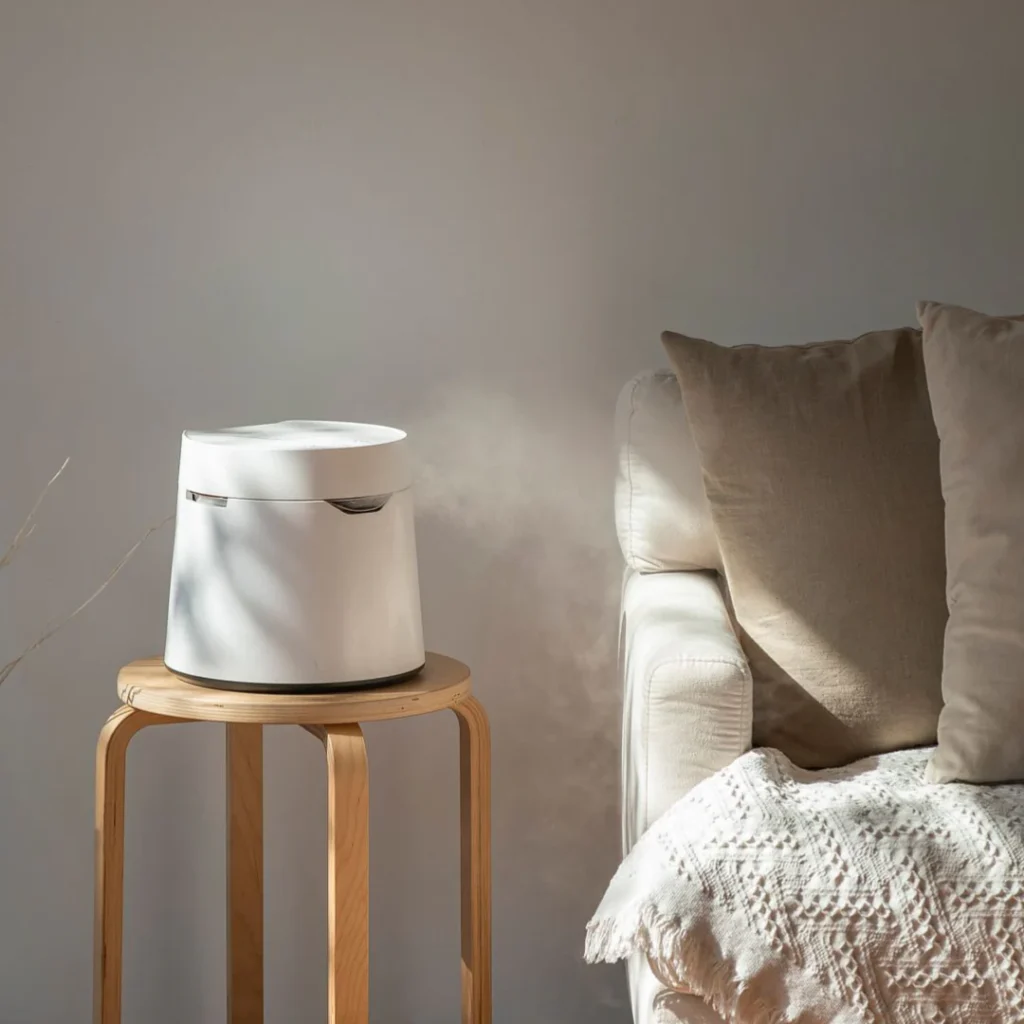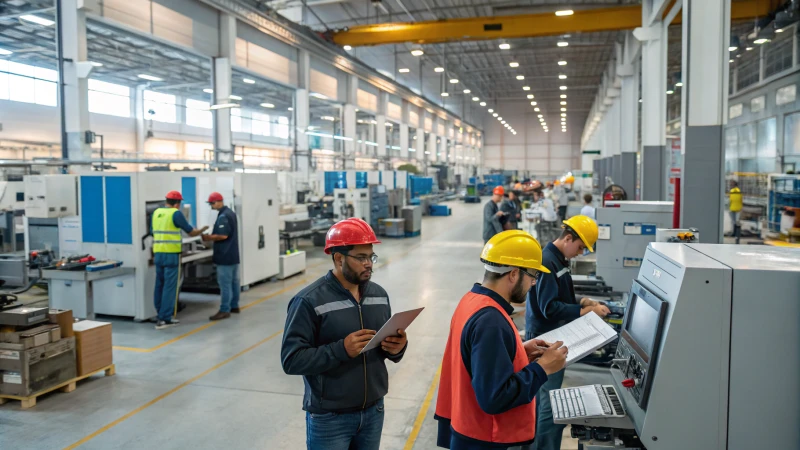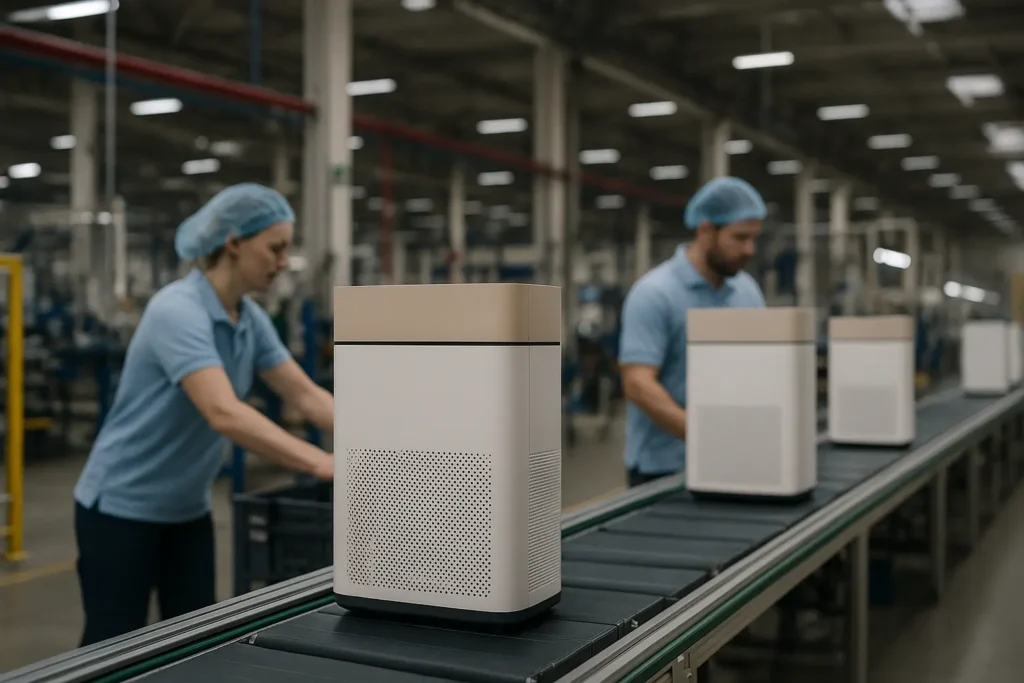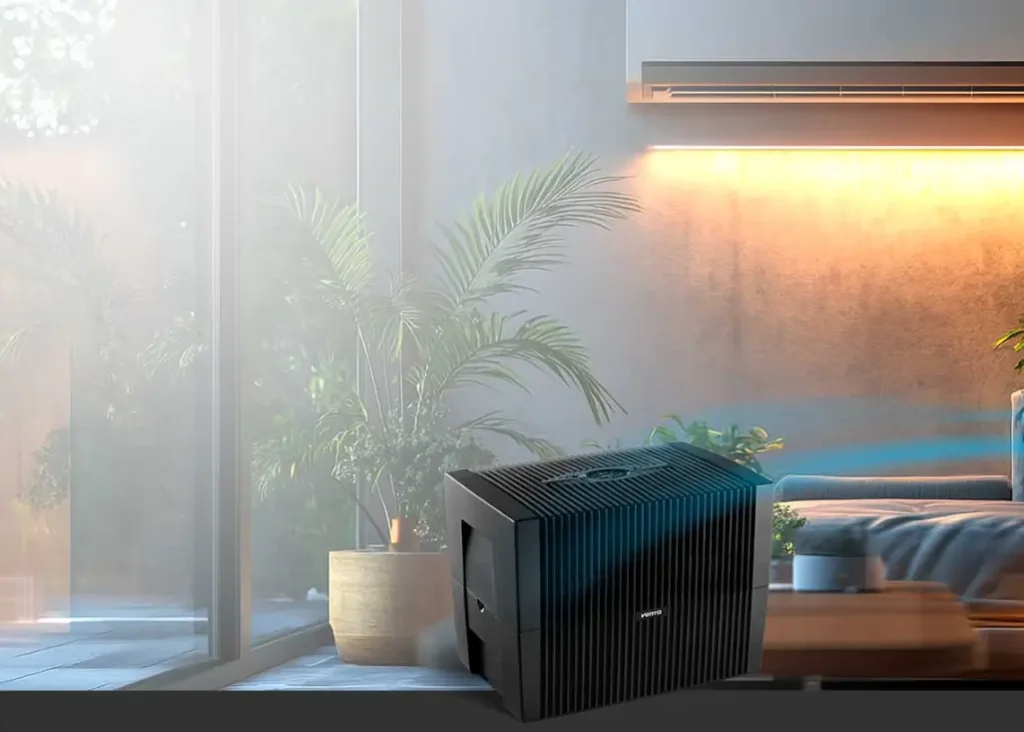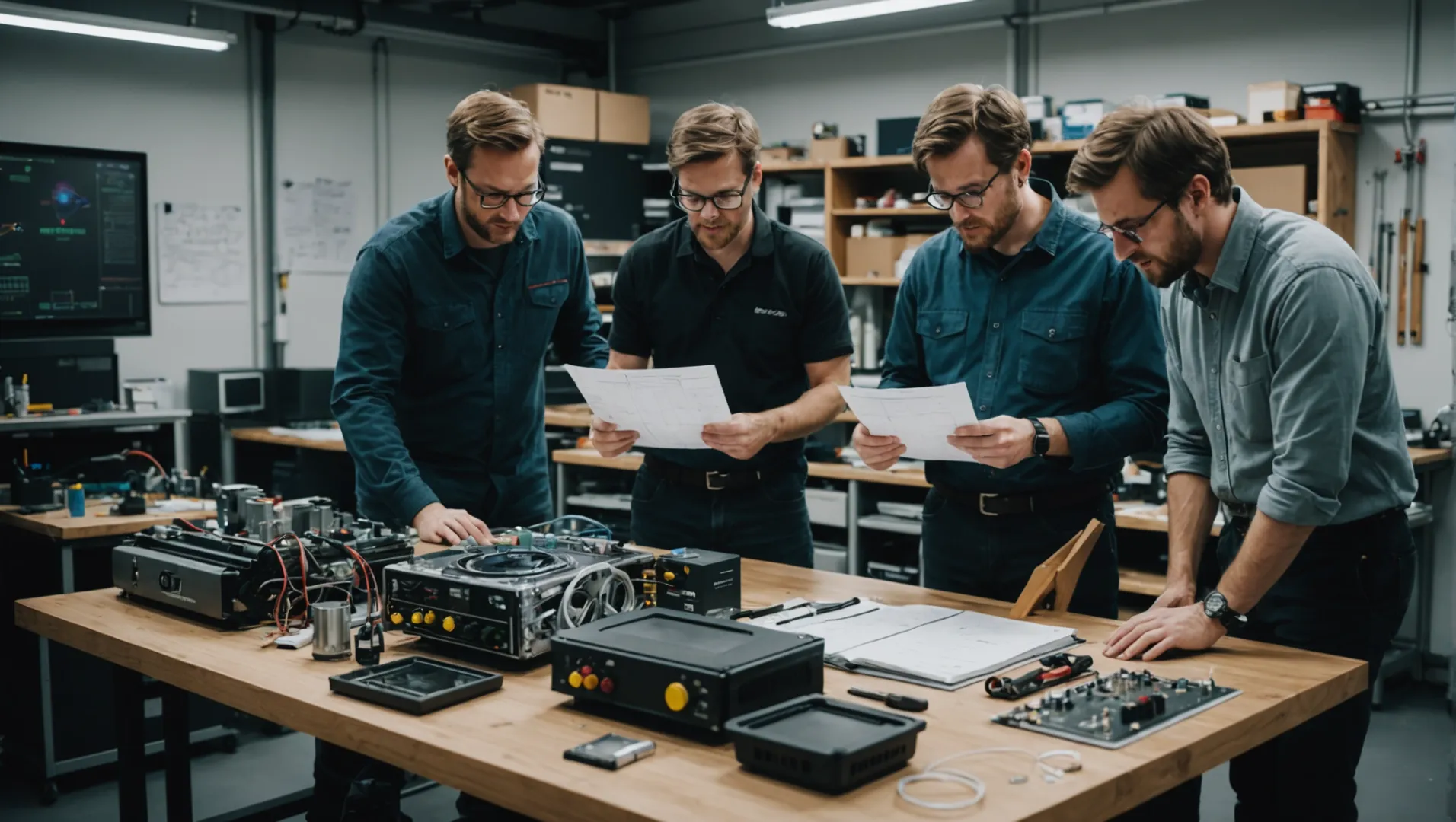
競争の激しい空気清浄機開発の世界では、成功する製品を生み出すには、優れたアイデアだけでは不十分だ。
空気清浄機の開発において、プロトタイプは以下のような性能指標のテストに役立つため、非常に重要である。 CADR風量、サイズ、騒音レベルなど。また、市場からの貴重なフィードバック、コスト管理の支援、サプライヤーの能力評価にも役立ちます。
プロトタイプは性能とデザインに関する直接的な洞察を提供しますが、その影響力は技術的な領域を超えます。プロトタイプ・テストの幅広い意味を理解することで、製品のイノベーションと市場対応力を大幅に高めることができます。プロトタイプが空気清浄機開発のあらゆる側面をどのように形成しているのか、さらに掘り下げてみましょう。
プロトタイプは空気清浄機の開発コスト削減に役立つ。真
プロトタイプは、早期に設計を改良することによってコスト削減の機会を特定し、生産コストを削減する。
空気清浄機のプロトタイピングで評価される主な性能指標とは?
空気清浄機が高い性能基準を満たすためには、試作品のテストが欠かせない。
空気清浄機のプロトタイピングにおける主な性能指標には、以下のようなものがある。 CADR風量、サイズ、騒音レベル。これらを評価することで、装置の効率性、有効性、市場への即応性が保証される。

クリーンエア供給率CADR)
CADR は、空気清浄機が1分間に供給できる清浄な空気の量を示す重要な指標です。煙、花粉、ホコリを除去する能力を測定し、その性能を総合的に評価します。高いほど CADR ということは、空気浄化効率がより良いということであり、プロトタイピングにおいて重要な要素となる。
気流
風量とは、清浄機が特定の時間内に室内で循環させることができる空気の量を指します。最適な性能を得るためには、気流が部屋のサイズに合っていることを確認することが重要です。プロトタイピングでは、エアフローパラメーターを調整することで、浄化速度とエネルギー効率のバランスをとり、装置全体の効果に貢献します。
サイズと携帯性
空気清浄機の物理的な寸法は、その使いやすさと市場へのアピールに影響します。プロトタイピングでは、サイズが消費者の期待に合っているかどうかを評価することが重要です。コンパクトなデザインは個人のスペースに合うかもしれませんし、大きなユニットは産業用途に最適かもしれません。サイズと性能のバランスをとることが、多様な消費者ニーズを満たす鍵となります。
騒音レベル
騒音レベルの評価は、特に家庭やオフィス環境において、ユーザーの快適性を確保する上で非常に重要です。プロトタイピングにより、開発者は性能を犠牲にすることなく騒音を最小化するために、さまざまなファンスピードや設計変更をテストすることができます。騒音レベルを下げることで、ユーザーの満足度を高め、市場での訴求力を広げることができます。
プロトタイピングによるコスト効率化
プロトタイプは、技術的な指標をテストするだけでなく、コスト戦略の改良にも役立つ。プロトタイプを理解することで 部品表1メーカーは、品質を損なうことなく生産コストを最適化することができます。この段階によって、性能指標と費用対効果の両方が最終的な製品設計に組み込まれます。
CADRが高いほど、空気浄化効率が高いことを示す。真
CADRは、1分間に供給される清浄空気量を測定するもので、高ければ高いほど良い。
空気清浄機の試作では、騒音レベルは考慮されない。偽
騒音レベルはユーザーの快適性のために非常に重要であり、プロトタイピング中にテストされた。
プロトタイプは空気清浄機開発のコスト管理にどう影響するか?
プロトタイプは、空気清浄機の開発におけるコスト管理において極めて重要な役割を果たす。
プロトタイプは、デザインと機能の早期テストを容易にすることで、潜在的なコスト削減の機会を特定し、資源配分を最適化し、大量生産に伴う財務リスクを軽減するのに役立つ。
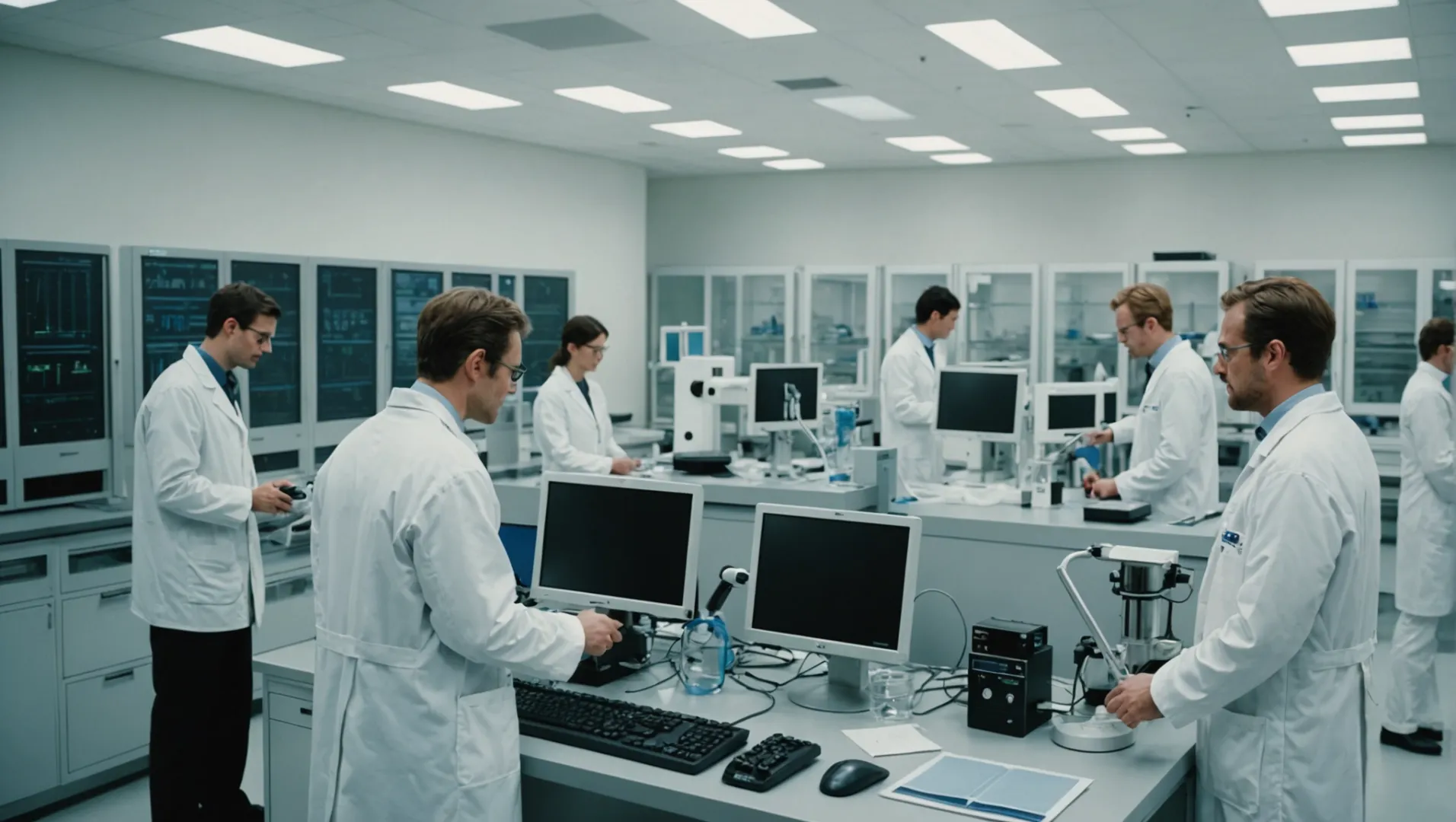
コスト分析のツールとしてのプロトタイプ
空気清浄機の開発には多額の費用がかかるため、一つひとつの決断が全体の予算に大きな影響を与える可能性がある。プロトタイプを使用することで、開発者はテストと改良を行うことができる。 主要業績評価指標2 ような CADR (クリーンエア供給率)、エアフロー、ノイズレベルなどを、コストのかかる生産ツールを導入する前に確認することができます。早期のテストは、品質に妥協することなくコストを削減できる分野を特定するのに役立ちます。
例えば、プロトタイプの結果、特定の設計要素が過剰なノイズにつながることが判明した場合、エンジニアは代替材料や構造的な修正を試すことで、より低いコストで望ましい性能を達成することができる。このような洞察は、より費用対効果の高い最終製品を作る上で非常に貴重です。
市場からのフィードバックとコスト管理
機能的なプロトタイプはまた、初期のマーケティング段階において、シード顧客を惹きつけるという重要な役割を果たす。早期の市場フィードバックは、開発者がどの機能を優先させるか、あるいは排除するかについて、情報に基づいた決定を下すのに役立ち、製品設計と開発プロセスを合理化する。このフィードバック・ループは、空気清浄機製造において悪名高く高価な、その後の金型投資を削減することができる。
顧客からのフィードバックで、ある機能がそれほど重要でないことが示唆されたシナリオを考えてみよう。その場合、開発者はリソースを別の場所に割り当てることを決定し、コスト管理戦略を最適化することができる。
| プロトタイプの利点 | コストへの影響 |
|---|---|
| 初期の性能テスト | 生産における不測の出費を抑える |
| 市場からのフィードバック | 機能の優先順位付けの最適化 |
| サプライヤー評価 | 長期的なコスト効率の確保 |
プロトタイピングによるサプライヤー評価
プロトタイピングは、サプライヤーの信頼性と開発能力を評価するベンチマークとなる。サプライヤーが設計仕様を満たすプロトタイプを提供するのに苦労している場合、それは将来の生産稼働に潜在的な問題があることを示している可能性があります。試作後にサプライヤーを変更すると、大きな機会費用が発生する可能性があるため、適切なサプライヤーを選択することは極めて重要である。
機能的なプロトタイプを作るサプライヤーの能力を評価することで、開発者はパートナーとしての長期的な生存可能性を測ることができる。この評価は、リスクを軽減し、選ばれたサプライヤーが品質を維持しながら効果的にコストを管理できることを保証するのに役立ちます。
開発期間の短縮
プロトタイピングの利点としてあまり知られていないのは、全体的な開発スケジュールを早める能力であり、これは本質的にコスト管理に影響する。サプライヤーはしばしば、以下のようなテスト工程に機能プロトタイプを使用する。 CNC 加工または UL/電総研 認証を取得することで、製品の発売スケジュールを数週間短縮できる可能性がある。
これらのスケジュールを短縮することで、企業は製品をより早く市場に投入し、保有コストを最小限に抑え、早期販売による収益の可能性を最大化することができる。例えば、開発期間を4~8週間短縮すれば、間接費の大幅な節約につながり、市場での競争力を高めることができる。
プロトタイプは空気清浄機の製造コストを削減する。真
プロトタイプはコスト削減の機会を特定し、財務リスクを最小限に抑える。
プロトタイプをスキップすることで、空気清浄機の開発をスピードアップ。偽
プロトタイピングは、デザインを早期に改良することによって、タイムラインを加速する。
なぜ試作品テストにおいてサプライヤーの評価が重要なのか?
プロトタイプテスト中のサプライヤーの評価は、製品の成功を左右する。
プロトタイプ試験中のサプライヤー評価は、信頼性、能力、コスト管理を保証し、プロジェクトの成功を守ります。
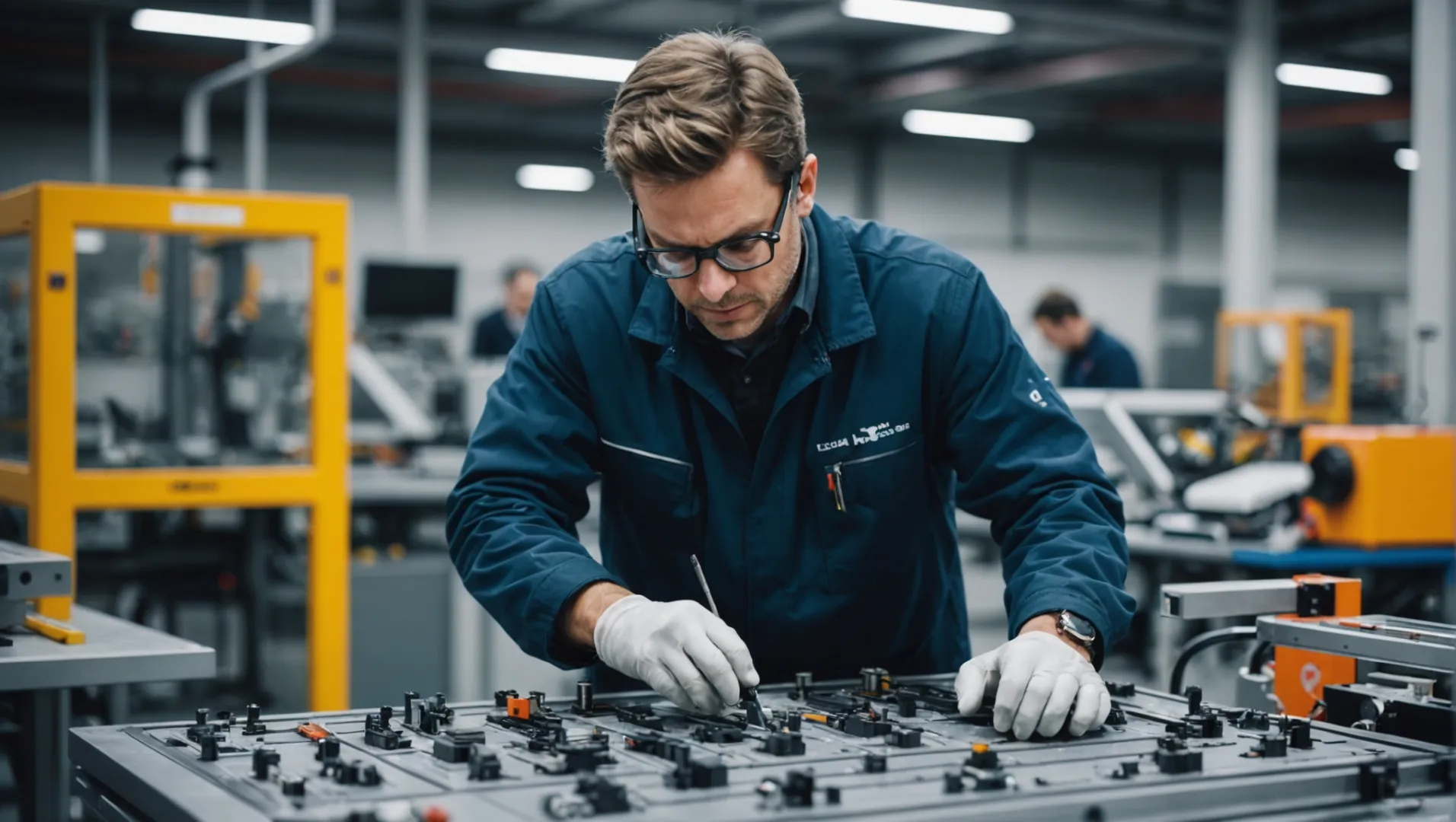
サプライヤーの信頼性と能力の評価
プロトタイプの開発では、サプライヤーの信頼性と能力が試される。A サプライヤーの能力3 複雑で入り組んだ設計に対応できることが重要です。サプライヤーが困難なプロトタイプに苦戦する場合、それは本格的な生産をサポートする能力に潜在的な問題があることを示している。金型製作後にサプライヤーを変更することは、大きな機会費用とプロジェクトの遅れにつながります。
コスト分析の重要性
コスト管理は、どんな新しいプロジェクトにも不可欠な側面である。プロトタイプのテスト中、サプライヤーは部品表(BOMこれは単価を決定する上で極めて重要である。このような早期のコスト分析により、企業はサプライヤーのコストを効果的に管理し、製品が小売価格の目標を満たし、市場での競争力を維持することができる。
| アスペクト | 考察 |
|---|---|
| BOM 精度 | サプライヤーが詳細なBOMを提供することを確認する。 |
| 小売価格目標 | 整列 BOM 小売価格戦略によるコスト |
開発期間の短縮
有能なサプライヤーは、機能テストを実施し、以下を提供することで、開発プロセスを迅速化することができる。 CNC などの認証のためのプロトタイプ UL または 電総研.これにより、タイムラインを4~8週間短縮できる可能性があり、ペースの速い市場での競争力を高めることができる。したがって、これらのプロセスを効率的にサポートできるサプライヤーを選択することは、迅速な市場参入のために極めて重要である。
長期的パートナーシップの可能性
プロトタイプテストは、目先のプロジェクトのニーズだけでなく、サプライヤーが長期的なパートナーになれるかどうかの評価でもある。一貫したパフォーマンス、予期せぬ課題への柔軟な対応、プロトタイプ段階での透明性の高いコミュニケーションは、サプライヤーが長期的な協力関係を築ける可能性を反映しています。
まとめると、プロトタイプ・テスト中のサプライヤー評価は、製品開発プロセスがスムーズで、コスト効率に優れ、タイムリーであることを保証し、将来のパートナーシップと市場での成功の舞台を整える上で極めて重要である。
ツール作成後にサプライヤーを変更すると、機会費用が増加する。真
金型製作後にサプライヤーを変更すると、プロジェクトが遅れ、余分なコストが発生する可能性がある。
部品表の精度は、小売店の価格戦略とは無関係である。偽
正確な部品表は、コストを小売価格に合わせるために不可欠である。
空気清浄機市場の立ち上げを加速する試作品テストとは?
プロトタイプテストは、デザインと機能を早期に最適化することで、空気清浄機の市場投入までの時間を短縮する上で極めて重要である。
プロトタイプテストは、デザインを改良し、性能を検証し、初期の市場フィードバックを収集することで、空気清浄機の市場投入を早め、時間のかかる修正を減らす。
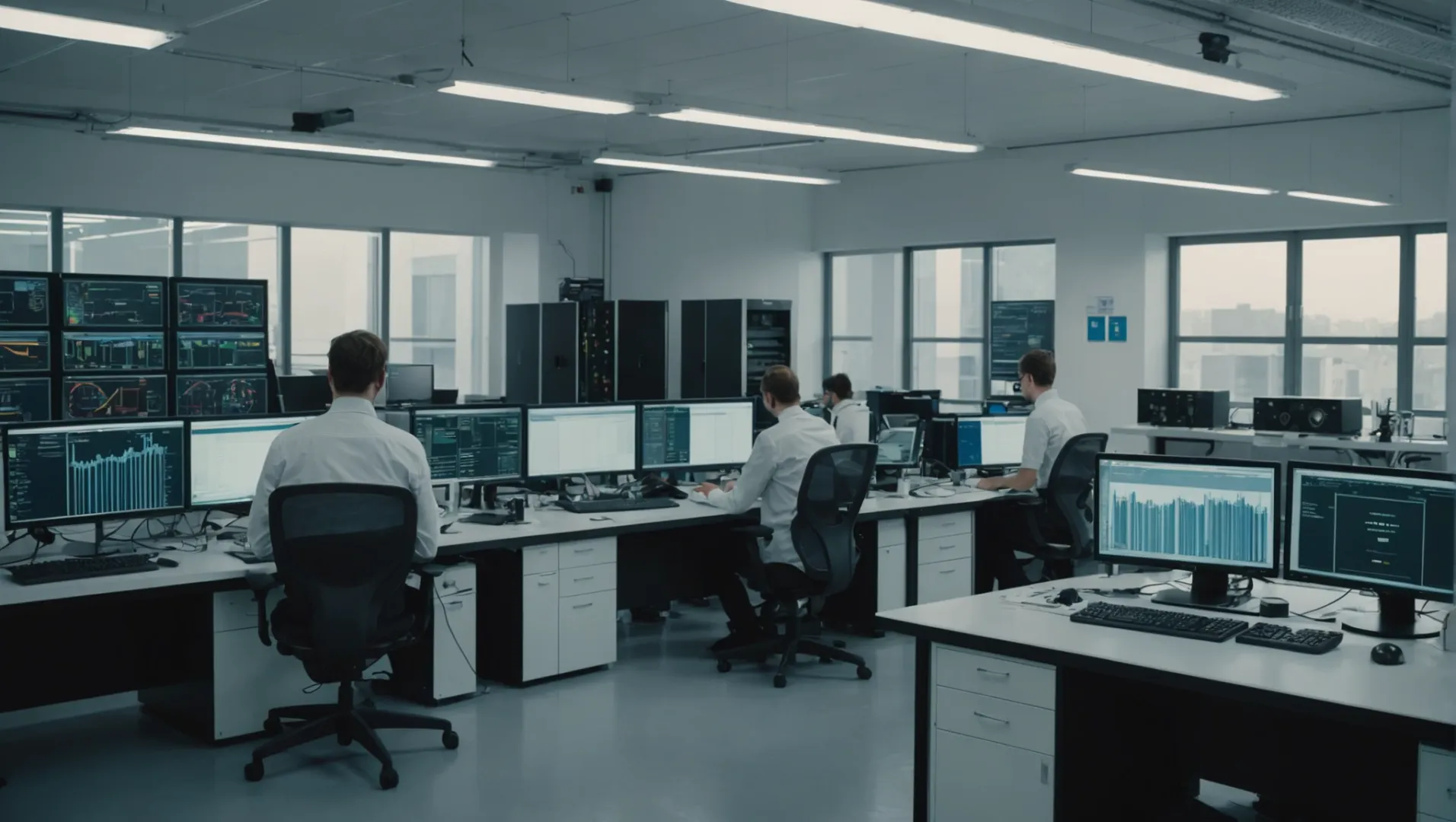
デザインと機能の洗練
プロトタイプテストが市場投入を加速させる主な方法の1つは、チームが本格的な生産前に設計上の欠陥を特定し、解決できるようにすることである。検証 重要なパフォーマンス指標4 クリーン・エア・デリバリー・レート(CADR)、気流、騒音レベルなど、開発者はプロセスの早い段階で必要な調整を行うことができます。この積極的なアプローチにより、後でコストのかかる再設計を防ぐことができます。
早期の市場フィードバックを得る
機能プロトタイプは、初期の市場フィードバックを収集するための貴重なツールである。企業はこれらのプロトタイプを種顧客に紹介し、その反応を評価することができる。この戦略は、消費者のニーズを理解するのに役立つだけでなく、マーケティング戦略を改良するのに不可欠な洞察も与えてくれる。
コスト管理の合理化
プロトタイプを作ることで、メーカーは部品表(BOM)はコスト分析に不可欠である。このステップは、収益性を確保しつつ、競合他社の価格設定に合わせた現実的な小売価格の設定に役立つ。さらに 機能プロトタイプ5そのため、企業は、空気清浄機では一般的に高額となる金型投資について、十分な情報に基づいた決定を下すことができる。
サプライヤーの信頼性評価
プロトタイプテストは、潜在的なサプライヤーの能力を評価する上で有益である。サプライヤーが高品質のプロトタイプを提供するのに苦労している場合、それは大量生産における潜在的な問題を示している可能性があり、企業はサプライヤーの選択を再考するよう促される。この評価プロセスは、サプライヤーの信頼性に関連するリスクを軽減する。
認証プロセスの迅速化
プロトタイプは、以下のような予備認証試験に使用できる。 UL または 電総研 テストは、コンプライアンス上の問題を早期に発見するのに役立つ。この実践により、全体的な開発スケジュールを数週間短縮し、より迅速な市場投入を実現することができる。
これらの戦略を活用することで、プロトタイプテストはコンセプトから製品発売までの道のりを効果的に短縮し、市場における空気清浄機の競争力を高める。
試作品テストにより、空気清浄機の再設計コストを削減。真
設計の欠陥を早期に特定することで、後々コストのかかる修正を防ぐことができる。
空気清浄機のプロトタイプは認証試験に使用できない。偽
プロトタイプは、時間を節約するために予備的な認証試験に使用される。
結論
プロトタイプは、デザインと機能を改良し、市場参入を助け、コストを最適化することで、空気清浄機を成功に導くために不可欠です。プロトタイピングを採用することで、製品開発戦略を向上させ、競争力を確保しましょう。
-
部品表が製品設計のコスト効率にどのような影響を与えるかを理解する:部品表とは、製品やサービスの建設、製造、修理に必要な原材料、部品、指示書の広範なリストです。 ↩
-
空気清浄機の設計を決定する重要な指標について学びましょう:私たちのプロトタイプは、空気の質だけでなく、関連する重要業績評価指標(KPI)を加工された形で表示することを可能にします。適切なKPI ... ↩
-
サプライヤーの能力を効果的に評価する方法を学ぶ..:品質、生産能力、リスク、コスト、価格設定に細心の注意を払う。 ↩
-
プロトタイプの評価で重要な指標を見つける..:空気清浄機の有効性は、フィルター効率、風量、風向パターンという3つの重要な性能指標によって決まります。 ↩
-
機能的プロトタイプがコスト効率の高い生産に不可欠な理由をご覧ください:機能的なプロトタイプは、開発プロセスの早い段階でリスクを特定・軽減するのに役立ち、コストのかかるミスや失敗の可能性を低減します。 ↩



